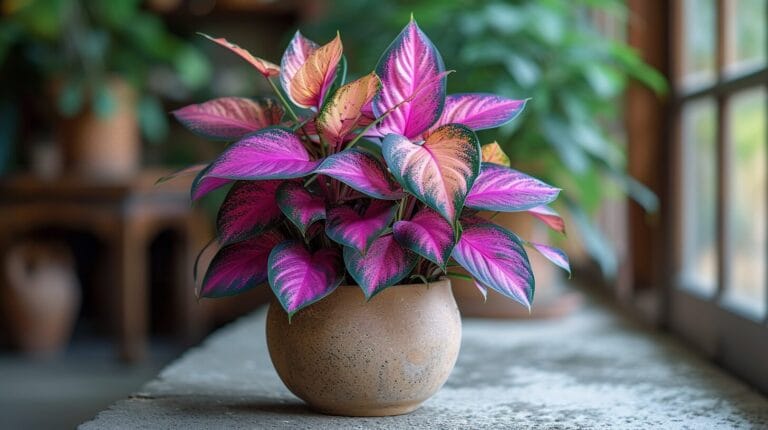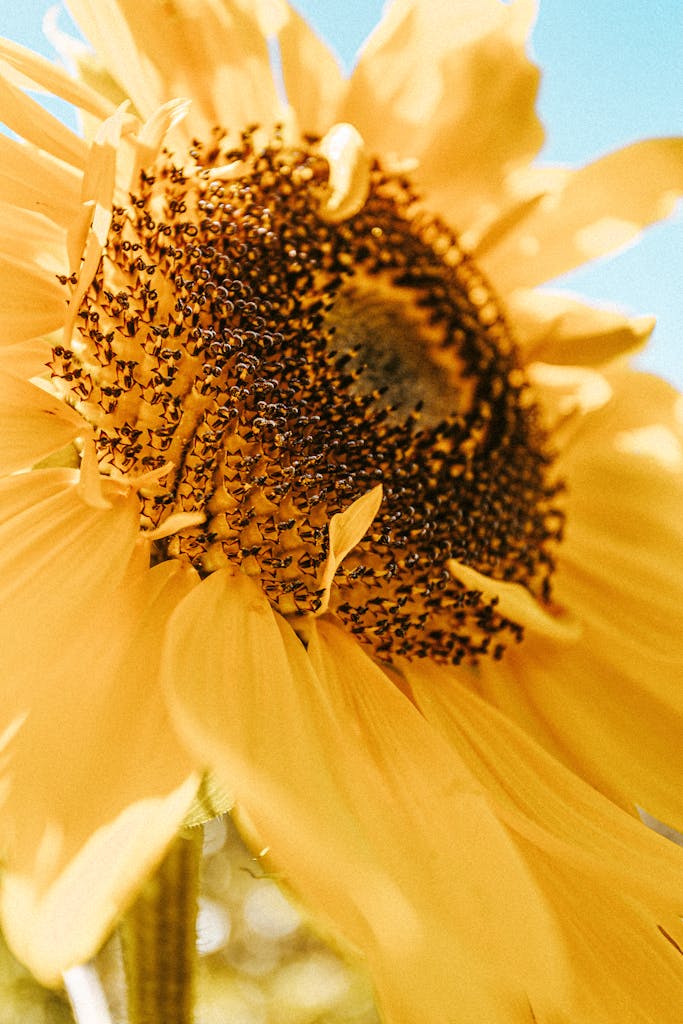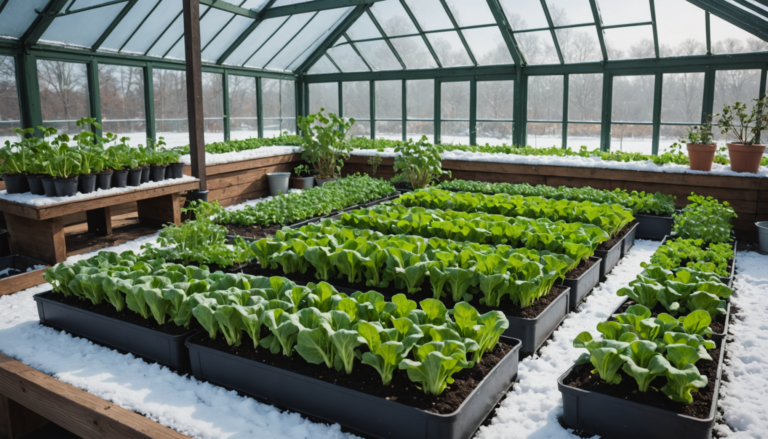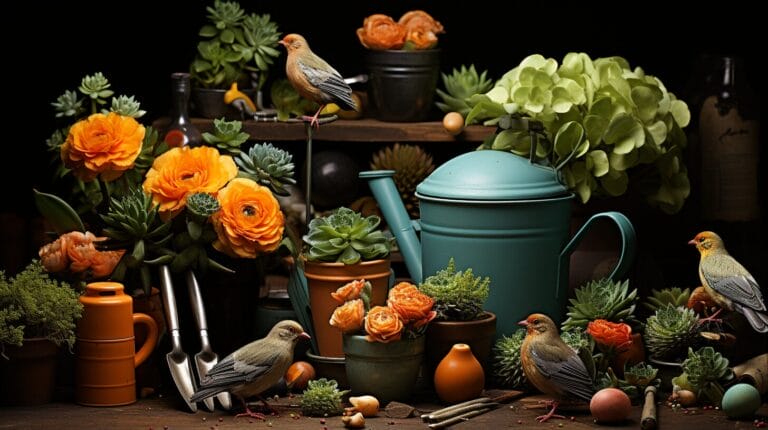Planning the perfect time to plant chamomile seeds can make the difference between a thriving herb garden and disappointing results. Whether you’re dreaming of fresh chamomile tea or looking to create a beautiful garden filled with daisy-like blooms, understanding when to plant chamomile seeds is your first step toward success. These delicate flowers aren’t just pretty – they’re powerful healing herbs that deserve a spot in every garden.
Getting the timing right matters because chamomile has specific needs for temperature and growing conditions. Both German and Roman varieties flourish when planted at the optimal time, rewarding gardeners with abundant flowers and that signature apple-like fragrance. From indoor seed starting to direct outdoor sowing, we’ll explore the best planting times for your climate zone, essential growing tips, and how to ensure your chamomile thrives throughout the season. Let’s discover how to transform your garden into a chamomile paradise!
When to Plant Chamomile Seeds: Timing and Conditions
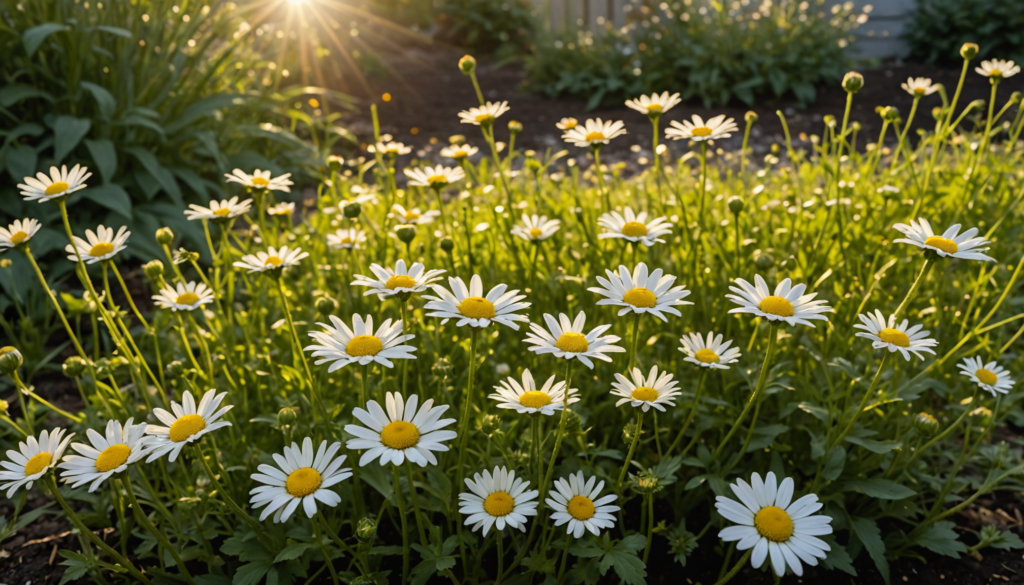
I pay close attention to soil temperature and frost dates when I decide to plant chamomile seeds. I make sure the soil stays between 55°F and 68°F, which helps ensure strong germination and early blooms. In many regions, I start seeds indoors about six weeks before the last frost, then move them outside once the weather turns mild.
Understanding Chamomile Plant Growth Stages
I notice that chamomile seeds germinate in about 7-14 days. Within three to four weeks, seedlings gain strength and begin forming sturdy stems. By 60-65 days, most german chamomile and roman chamomile plants reach maturity and produce daisy-like flowers with white petals and a yellow center. Chamomile blooms often start as early as six weeks after planting, which gives me plenty of time to harvest fresh or dried flowers for tea and herbal remedies. (University of Minnesota Extension)
Best Seasons to Plant Chamomile Seeds in Your Garden
I plant chamomile outdoors in spring, about four to six weeks before the danger of frost passes. In zones 9-10, I often sow seeds in late summer or early fall, when the weather remains warm enough for germination. Chamomile can grow indoors any time of year if I provide bright sunlight and consistent soil moisture.
Soil Temperature Considerations for Plant Chamomile
I find that chamomile seeds need well-draining soil at temperatures between 55°F and 68°F. If temperatures drop below 45°F, germination slows. While germination can occur up to 75°F, I prefer a moderate range to avoid leggy seedlings.
Zone-Specific Planting Guidelines
I follow these zone-based suggestions to help my chamomile thrive:
| Zone | Best Planting Time | Notes |
|---|---|---|
| 3-8 | Spring | Start indoors 6-8 weeks before last frost |
| 9-10 | Spring or Fall | Direct sowing works well |
| Indoor | Year-round | Maintain 55-68°F |
I adapt these guidelines to my local climate and frost schedule. Roman chamomile is a perennial in many colder areas, while German chamomile often grows as an annual plant. Both types are edible and known for their fragrant, daisy-like flowers and calming properties.
How to Grow Chamomile from Seed Successfully
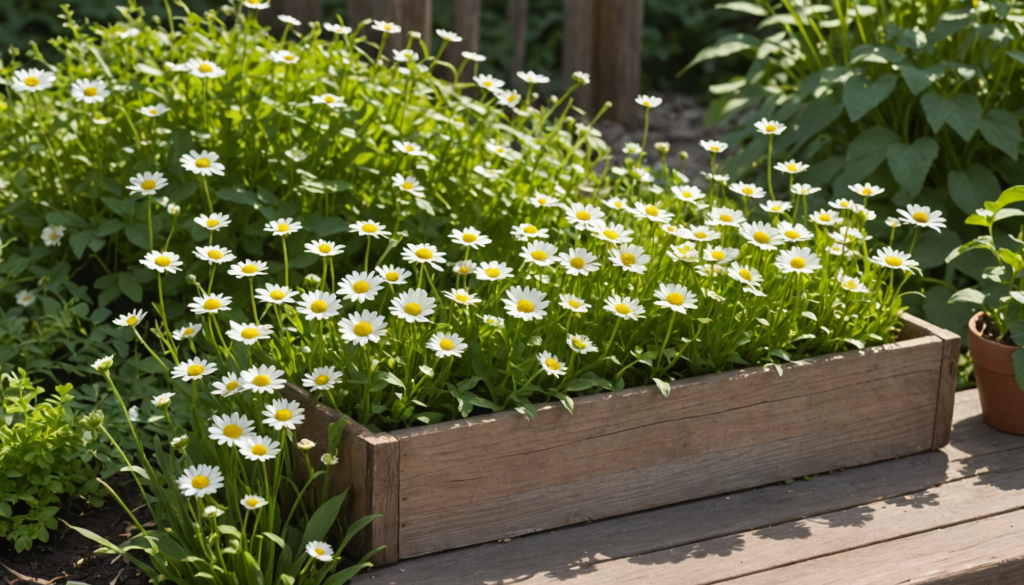
I approach chamomile seed growing with careful preparation. I focus on quality seeds, proper soil conditions, and consistent care to encourage strong, fragrant blooms.
Selecting the Right Chamomile Seeds for Your Garden
I use German chamomile when I want an annual plant that grows about 20 to 24 inches tall. Roman chamomile is a perennial that spreads as a lush ground cover with white petals and a bright yellow center. I look for seeds less than two years old and store them in a dry place. Reputable seed suppliers often label their stock with clear dates. (University of Minnesota Extension)
Step-by-step Guide for Planting Chamomile Seeds
- Prepare the pot or seedling tray with light, well-draining potting mix.
- Scatter seeds on the surface, then press gently because chamomile seeds need light to germinate.
- Water from the bottom or mist lightly to keep the soil moist but not soaked.
- Expect sprouts in about 10 to 14 days, depending on temperature.
I often start seeds indoors six to eight weeks before the last frost, which helps me determine when to plant chamomile seeds for an early start.
Best Practices for Watering and Sunlight for Chamomile
I keep chamomile in full sun for at least six hours each day, providing afternoon shade if the climate is hot. Watering is moderate, and I wait until the top inch of soil is dry before I water again. Good air circulation around stems prevents fungal issues, especially on young seedlings. These daisy-like flowers thrive when the soil drains well. (Penn State Extension Gardening Know How)
Indoor vs. Outdoor Growing Methods
| Growing Method | Benefits | Challenges |
|---|---|---|
| Indoor | Year-round growing, protected from frost, controlled environment | Requires grow lights, may have limited container space |
| Outdoor | Natural sunlight, more space, strong air circulation | Weather-dependent, requires careful pest control |
I choose indoor sowing if my region has colder weather or a shorter growing season. When I plant outdoors, I wait until after the danger of frost has passed.
Care for Chamomile: Essential Maintenance Tips

Chamomile grows best with consistent care and simple upkeep. This herb offers daisy-like flowers with white petals and a yellow center. Both German chamomile (an annual plant) and Roman chamomile (a perennial) are edible and thrive in a range of conditions. When gardeners follow proper fertilization, pest management, pruning, and organic methods, chamomile can grow abundantly in containers or garden beds.
Nutrient Requirements: How to Fertilize Your Chamomile
Chamomile seeds need light feeding, especially during early spring. Too much nitrogen often produces leggy stems with fewer blooms. A 1- to 2-inch layer of compost around the base supports steady growth and helps the soil remain well-draining. Avoid heavy fertilizers, since chamomile performs well in moderate to poor soil with a pH range of 5.6-7.5.
Common Pests and How to Manage Them in Your Herb Garden
Chamomile is low-maintenance but still faces occasional pests such as aphids, spider mites, and mealybugs. Regularly spray plants with water to knock off bugs and apply organic insecticidal soap if needed. Spacing chamomile 6-18 inches apart improves air circulation, which deters infestations. Companion planting with basil or onions also helps control pests.
Pruning Tips for Healthy Chamomile Flowers and Plants
Regular deadheading encourages new blooms throughout the growing season. Spent flowers should be cut at the stem base to prevent self-seeding and to keep the plant tidy. Removing yellowed leaves also helps control pests and disease. Trimming plants by about one-third after the main flowering period encourages bushy growth.
Organic Care Methods and Companion Planting
Organic methods keep chamomile patches healthy while protecting pollinators. A balanced approach includes mulching with organic matter to retain soil moisture and hand-pulling weeds. Chamomile often pairs well with cabbage family plants, basil, and mint to deter pests and enhance flavor. Maintain a 6-18-inch spacing between plants for adequate soil drainage and airflow.
| Soil pH | Fertility | Drainage | Texture |
|---|---|---|---|
| 5.6–7.5 | Moderate to poor | Well-draining | Light and loose |
Harvesting Chamomile: Knowing When and How

I begin my chamomile harvest when the blooms appear fresh and fully open. This usually happens a few weeks after the first buds show, but timing can vary based on when to plant chamomile seeds in spring. By checking each flower, I look for white petals that spread out like tiny daisies and a bright yellow center.
When to Harvest Chamomile Flowers for Maximum Flavor
I prefer early morning harvests because dew adds freshness and preserves flavor. The ideal flowers have firm centers that feel plump and a mild, apple-like scent. In most cases, I see the best results starting around 30 days after the first blooms.
Key indicators:
• Petals lie flat or slightly curved
• Yellow center stands out and looks domed
• Each bloom feels crisp and not wilted
Techniques for Harvesting and Drying Chamomile
I gently pinch each flower head just below the bloom or nip it with clean pruners for bigger batches. I spread blossoms in a single layer so they do not get crushed.
I use several drying methods:
• Air drying: Arrange on a screen in a warm, dim space
• Dehydrator: Set to 95°F (35°C) for four to six hours
• Oven drying: Crack the door and keep it on the lowest setting
Storing Dried Chamomile for Tea and Medicinal Uses
I place fully dried flowers in airtight containers and keep them away from direct light or heat. Cool locations around 65-70°F (18-21°C) work best. Each container gets labeled so I know the harvest date and can use them within about a year.
| Storage Method | Expected Shelf Life | Best Practices |
|---|---|---|
| Airtight jar | 12 months | Keep in dark spot |
| Paper bag | 3-6 months | Use in dry environment |
| Vacuum sealed | 18-24 months | Do not open until needed |
Quality Indicators for Harvested Flowers
High-quality chamomile feels crisp and looks golden or light green around the base. A fresh, apple-like aroma signals good flavor. I discard any blossoms that smell moldy or show discolored spots, since these can affect taste and safety.
The Benefits of Chamomile: From Garden to Cup

Chamomile Tea: Health Benefits and Brew Guide
Chamomile tea often contains apigenin, which may encourage deeper rest and calm. This natural remedy has anti-inflammatory properties that can support healthy digestion. Many studies report favorable effects on mild anxiety, and most adults tolerate the tea well. Brewing involves steeping two or three fresh or dried flower heads in hot water for about five minutes and then straining into a cup. (Wikipedia)
Using Chamomile Flowers in Cooking and Garden
Chamomile flowers are edible and add a mild, apple-like flavor to salads, desserts, and vinegars. Their white petals and bright yellow centers provide natural decoration for baked goods. In a garden, chamomile can grow near vegetables to deter pests and encourage pollinators. When to plant chamomile seeds can vary by climate, but many gardeners sow them outdoors after the last frost date.
Different Types of Chamomile and Their Uses
German chamomile (Matricaria chamomilla) is an annual plant that commonly appears in teas and herbal remedies. Roman chamomile is a perennial that grows low to the ground, forming a fragrant, daisy-like ground cover. Both varieties have white petals and a yellow center but differ in height and spreading habits. German chamomile plants often self-seed for the next growing season, while Roman chamomile is a perennial down to zone 4.
Scientific Research on Chamomile Benefits
Several clinical trials suggest chamomile promotes sleep quality and reduces mild anxiety. Investigations also note possible digestive benefits and potential anti-inflammatory qualities in chamomile blooms. Some reports show varying degrees of effectiveness, and recommended dosages can differ. Despite these differences, chamomile remains a popular herb with a long history of safe use in beverages and folk remedies.
Troubleshooting Common Chamomile Growing Issues

I focus on common chamomile plants by monitoring soil conditions, spacing, and local climate. This method keeps each chamomile seedling healthy and encourages daisy-like flowers with white petals to bloom.
Addressing Growth Problems
I often see yellow leaves on chamomile seedlings when the soil stays too damp. Leggy stems usually point to inadequate sunlight, so I shift plants to a bright location for full sun exposure. If stunted growth appears, I add a balanced fertilizer and ensure the soil drains well. I also watch for poor germination by checking when to plant chamomile seeds in spring once frost risk passes.
Disease Prevention and Treatment
Excess humidity or wet foliage often triggers diseases like powdery mildew. I improve air circulation by spacing chamomile seedlings 6-18 inches apart, and I water at the soil level to avoid damp leaves. Organic fungicides or immediate removal of affected blooms can control severe cases of powdery mildew or botrytis blight. Root rot also appears in soggy conditions, so I reduce watering and use well-draining soil.
| Disease | Symptom | Key Strategy |
|---|---|---|
| Powdery Mildew | White patches on leaves | Increase airflow |
| Root Rot | Wilting stems | Improve drainage |
| Botrytis Blight | Gray mold on flowers | Remove infected blooms |
Climate-Related Challenges
I protect Roman chamomile plants when temperatures drop below 40°F (4°C) by using row covers or moving pots indoors. In hotter climates, partial shade during the afternoon prevents sunscald, while mulch helps keep soil moist. If heavy rain floods the garden, I raise chamomile in containers or raised beds for better drainage. Water deeply but less frequently during dry spells.
Conclusion
Growing chamomile from seed is an exciting journey that any gardener can master with the right timing and care. Whether you choose German or Roman chamomile, success comes from understanding when to plant your seeds and providing the proper growing conditions. Remember that timing is key – starting seeds indoors 6-8 weeks before the last frost gives your plants the best chance to thrive.
With just a bit of attention to soil quality, sunlight, and water needs, you’ll soon have a flourishing herb garden filled with these daisy-like flowers. From making your own calming tea to creating natural remedies, the rewards of growing chamomile extend far beyond the garden. Why not start your chamomile garden today? Your future self will thank you for planting these versatile and beneficial herbs.
FAQs
1. When is the best time to start chamomile seeds indoors?
I start chamomile seeds indoors about 6–8 weeks before the last frost date in my area. This timing usually falls between February and March for many regions. Knowing when to plant chamomile seeds helps the seedlings establish before moving them outdoors.
2. How long does chamomile take to grow from seed?
I find that chamomile seeds germinate in 7–14 days. The plants reach maturity in about 60–65 days, and I often see the first blooms 6–8 weeks after transplanting. With proper care, German chamomile keeps producing daisy-like flowers for another 8–10 weeks.
3. What are the differences between Roman and German chamomile?
| Feature | Roman Chamomile | German Chamomile |
|---|---|---|
| Growth Habit | Perennial (4–12 inches) | Annual (24–36 inches) |
| Flowers | Single bloom per stem | Multiple blooms per stem |
| Lifespan | Returns each year | One season |
| Common Uses | Ground cover, rock gardens | Tea, herbal remedies |
4. Can chamomile grow in containers?
I use containers with at least 12 inches of depth to give chamomile roots enough space. A well-draining potting mix prevents waterlogged soil, and about 6–8 hours of bright sunlight encourages strong growth. Consistent watering keeps these fragrant blooms healthy in pots.
5. How should chamomile seeds be saved for next season?
- Allow flowers to turn brown on the plant.
- Pick the dry seed heads.
- Leave them in a paper bag for 1–2 weeks.
- Transfer seeds to an airtight container.
- Store in a cool, dark place and use within three to five years.


